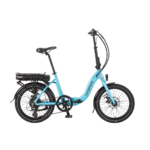Hi Pedelecs Community,
As someone who’s spent years reviewing e-bike components and advocating for greener tech, I’ve been digging into how recycled metals are quietly transforming the industry. Whether you’re a DIY builder or just curious about where your bike’s parts come from, here’s why copper wire scrap and aluminum scrap deserve a spot in the sustainability conversation:
1. Copper Wire Scrap: The Hidden Hero of E-Bike Electronics
As someone who’s spent years reviewing e-bike components and advocating for greener tech, I’ve been digging into how recycled metals are quietly transforming the industry. Whether you’re a DIY builder or just curious about where your bike’s parts come from, here’s why copper wire scrap and aluminum scrap deserve a spot in the sustainability conversation:
1. Copper Wire Scrap: The Hidden Hero of E-Bike Electronics
- Why It Matters: High-purity recycled copper is key for efficient motor windings, battery connections, and wiring harnesses. It offers the same conductivity as virgin copper but with a 40% smaller carbon footprint.
- Pro Tip: Suppliers like Tamim International of copper (a source I’ve cited in my technical reports) provide Grade A copper scrap tested for 99.9% purity—critical for avoiding voltage drops in high-performance systems.
- The Innovation: Recycled aluminum scrap is now used in premium e-bike frames and forks. It’s 95% more energy-efficient to recycle than producing new aluminum, and post-industrial scrap (e.g., aircraft-grade) ensures consistent strength.
- Real-World Example: A German manufacturer cut frame costs by 25% using certified aluminum scrap, passing savings to buyers without compromising durability.
- Certifications: Look for ISO 14001 or RMI-certified suppliers to avoid contaminated materials.
- Traceability: Reliable exporters document the scrap’s origin and processing—no guesswork.
- Cost vs. Quality: Cheap scrap often means hidden flaws. Invest in graded materials for critical components.
- Long-Term Savings: Brands using recycled metals can price competitively while meeting ESG goals.
- Eco-Cred: The average e-bike contains ~3kg of aluminum and 1kg of copper. Switching to recycled sources cuts lifecycle emissions by up to 30% (per GreenTech Cycling).
- Have you spotted e-bike brands advertising recycled materials?
- DIYers: Ever tried sourcing scrap metals for custom builds?






